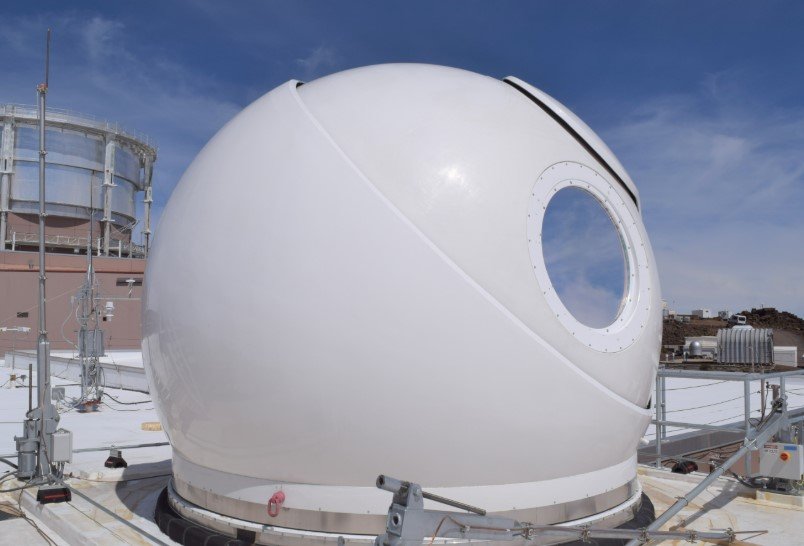A sudden, blindingly bright radio flash from deep space has turned heads—and not from a galaxy far away, but from a satellite humanity had all but forgotten. NASA’s Relay 2, launched in the mid-60s and silent for decades, just made an unexpected comeback.
The burst, picked up by Australian astronomers on June 13, lasted less than 30 nanoseconds. But in that tiny blink, it shone brighter than anything else in the radio sky. And it didn’t come from a distant quasar or cosmic anomaly—it came from just 20,000 kilometers above Earth.
A Mysterious Flash From the Past
It wasn’t just any signal. For a moment, it outshone every other object on their radar. That’s not something that happens every day—especially not from a satellite presumed dead since the Johnson era.
Relay 2, a NASA communications satellite launched in 1964, was thought to be long defunct. Engineers had last used it in 1965, and it was officially written off by 1967. Since then, it’s just been quietly orbiting, part of the growing cloud of space junk.
But then came the blip.
“This was an incredibly powerful radio pulse that vastly outshone everything else in the sky,” said astrophysicist Clancy James from Curtin University. The team using the Australian Square Kilometre Array Pathfinder (ASKAP) caught the signal out of nowhere. And it took everyone by surprise.

From Debris to Data Goldmine
What exactly triggered Relay 2 to cry out after six silent decades? That’s still under debate. But it’s probably not some secret AI awakening or alien interference, tempting as those theories sound.
Instead, the best bet is something more mundane, yet just as fascinating.
Experts think it might’ve been caused by:
-
A micrometeorite slamming into the satellite
-
An electrostatic discharge event due to particle build-up
Either scenario would’ve released a jolt strong enough to generate the sudden flash of radio waves. And in space, that can be enough to ping a telescope back home.
Karen Aplin, physicist at the University of Bristol, said this could open a window into studying electrostatic activity in low Earth orbit—a growing concern as satellites get cheaper and more common.
Tracking the Signal’s Origin
Initially, the team thought they’d found something entirely new. Maybe even a brand-new pulsar. The flash was that unusual.
But when they traced its path, it wasn’t coming from deep space. It was hovering right above us, 20,000 kilometers up—exactly where Relay 2 is known to orbit.
“Once we narrowed down the position, the pieces started falling into place,” said James.
One short sentence, but it captures the quiet thrill of a mystery solved.
The Relay Programme: A Quick Refresher
Back in the 1960s, NASA’s Relay programme helped lay the groundwork for satellite-based communications. Relay 2 itself was used to test TV transmissions, space telemetry, and even early global broadcast capabilities.
Here’s a quick breakdown of Relay 2’s mission history:
| Feature | Detail |
|---|---|
| Launch Date | January 21, 1964 |
| Launch Vehicle | Delta B |
| Mission End | Last active use in 1965 |
| Declared Inactive | 1967 |
| Orbit Altitude | ~20,000 km |
| Function | Communications relay, telemetry |
Since then, it’s been drifting quietly in space, like a ghost from another time.
Why It Matters in 2025
Sure, a half-century-old satellite lighting up the radar for a few nanoseconds might not sound like a big deal. But in the age of crowded orbits and expanding satellite constellations, it could be a game-changer.
(And yes, that one we’re allowed to use.)
With thousands of low-cost satellites launching every year, figuring out how electrostatic charges or tiny impacts affect them could help prevent bigger problems down the line.
Aplin explained, “This radio detection may ultimately offer a new technique to evaluate discharges in space.” That’s big, especially considering how fragile and sensitive today’s satellite systems are.
One sentence here—just to break the rhythm.
Ghosts in the Sky and What Comes Next
The signal might’ve lasted just 30 nanoseconds, but it’s already stirred up curiosity, speculation, and a flurry of research.
And it might not be the last.
There are dozens—maybe hundreds—of derelict satellites still drifting around Earth, many from the Cold War era. If Relay 2 can make itself known, who’s to say others won’t?
The paper documenting the incident has already been accepted for publication in The Astrophysical Journal, and a preprint is live on arXiv.
Science, like space, is full of surprises. Sometimes, they come from places you stopped looking.
